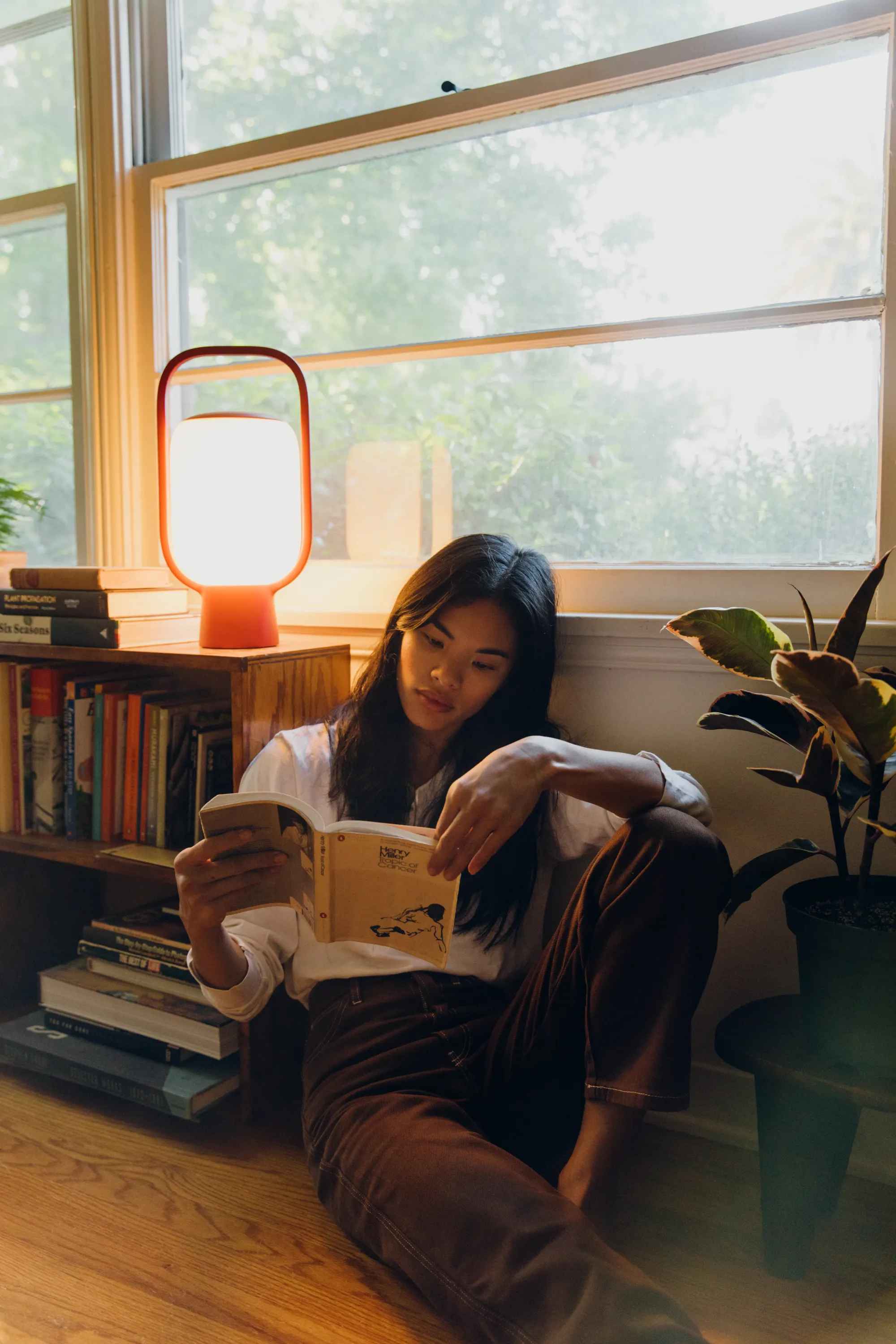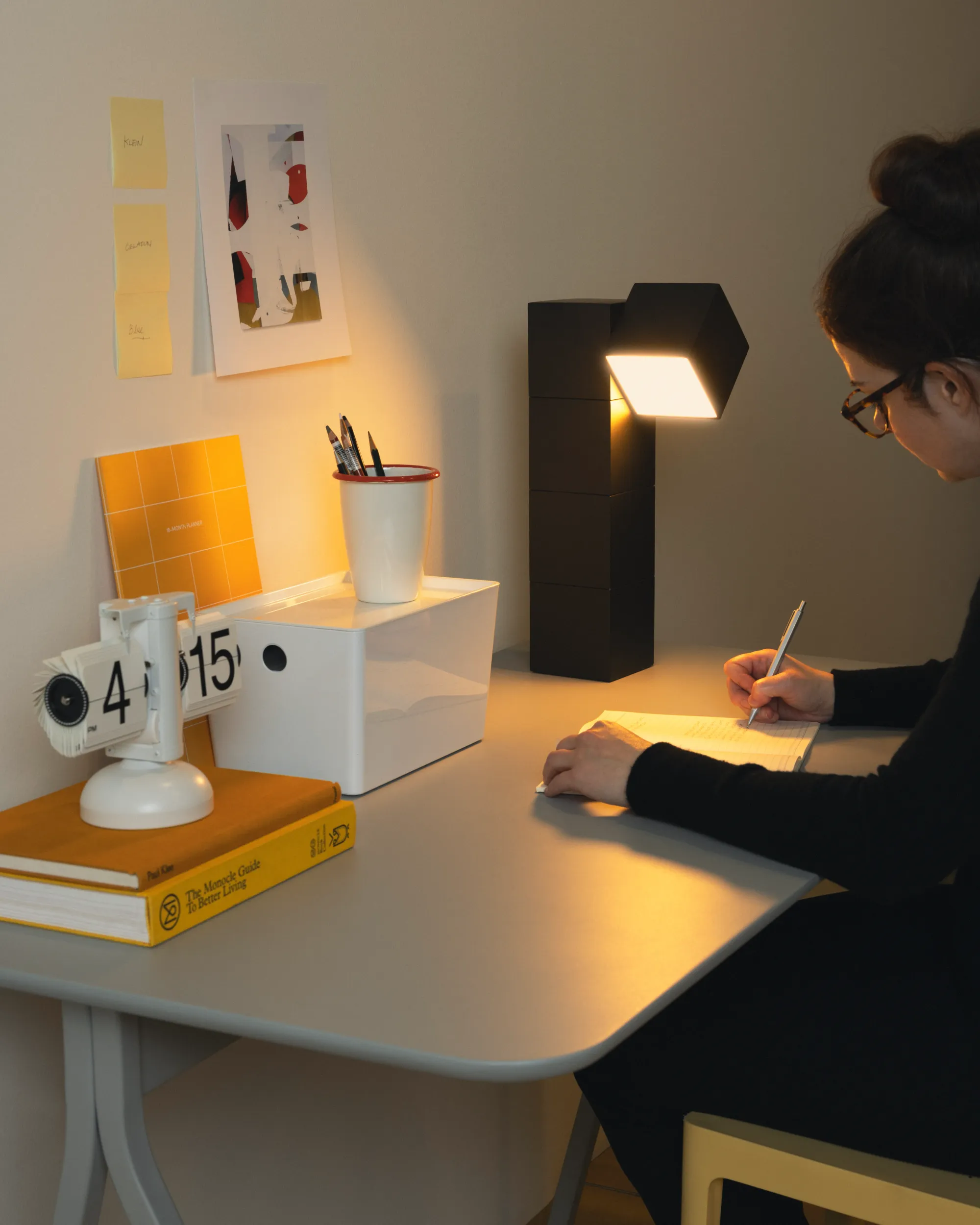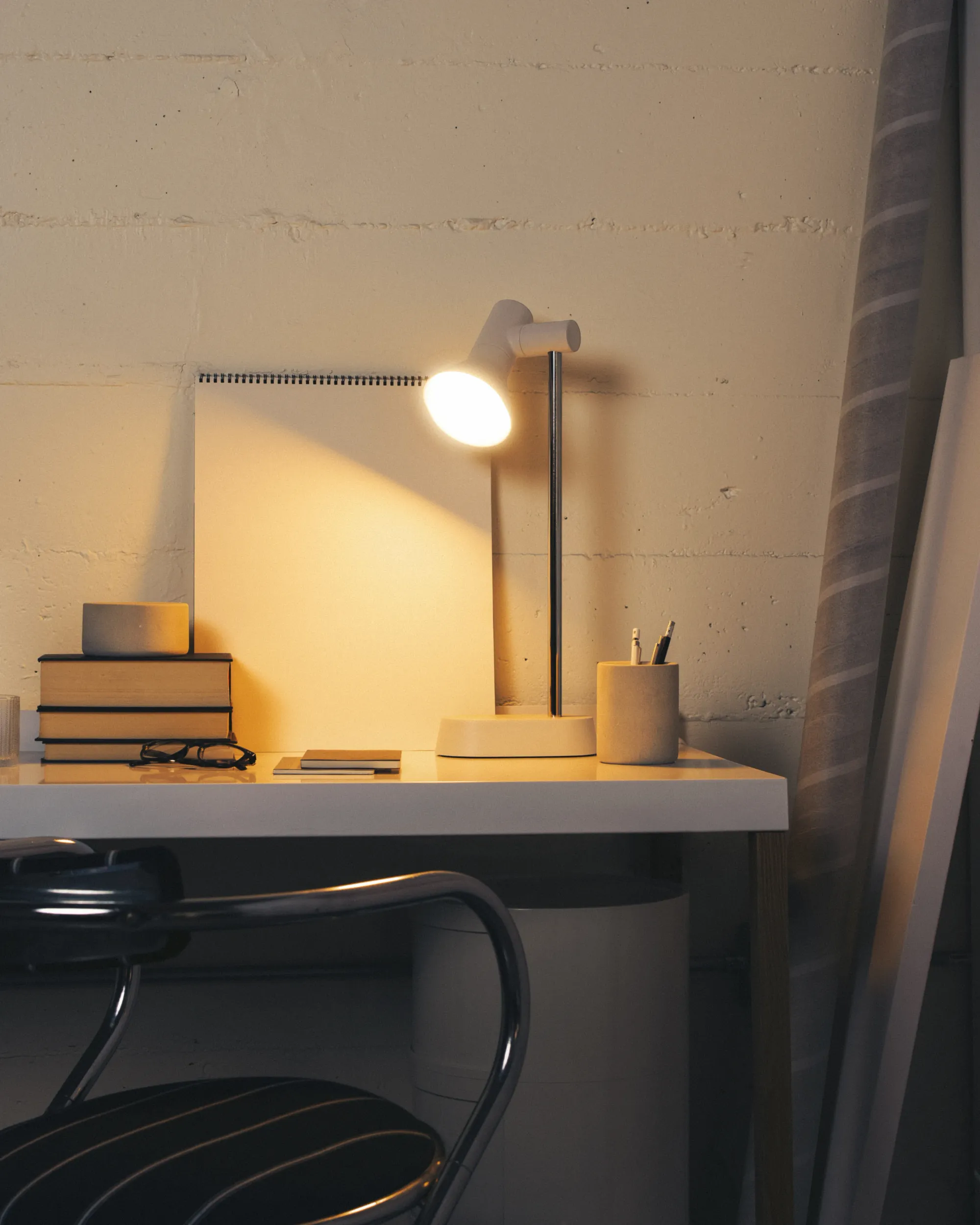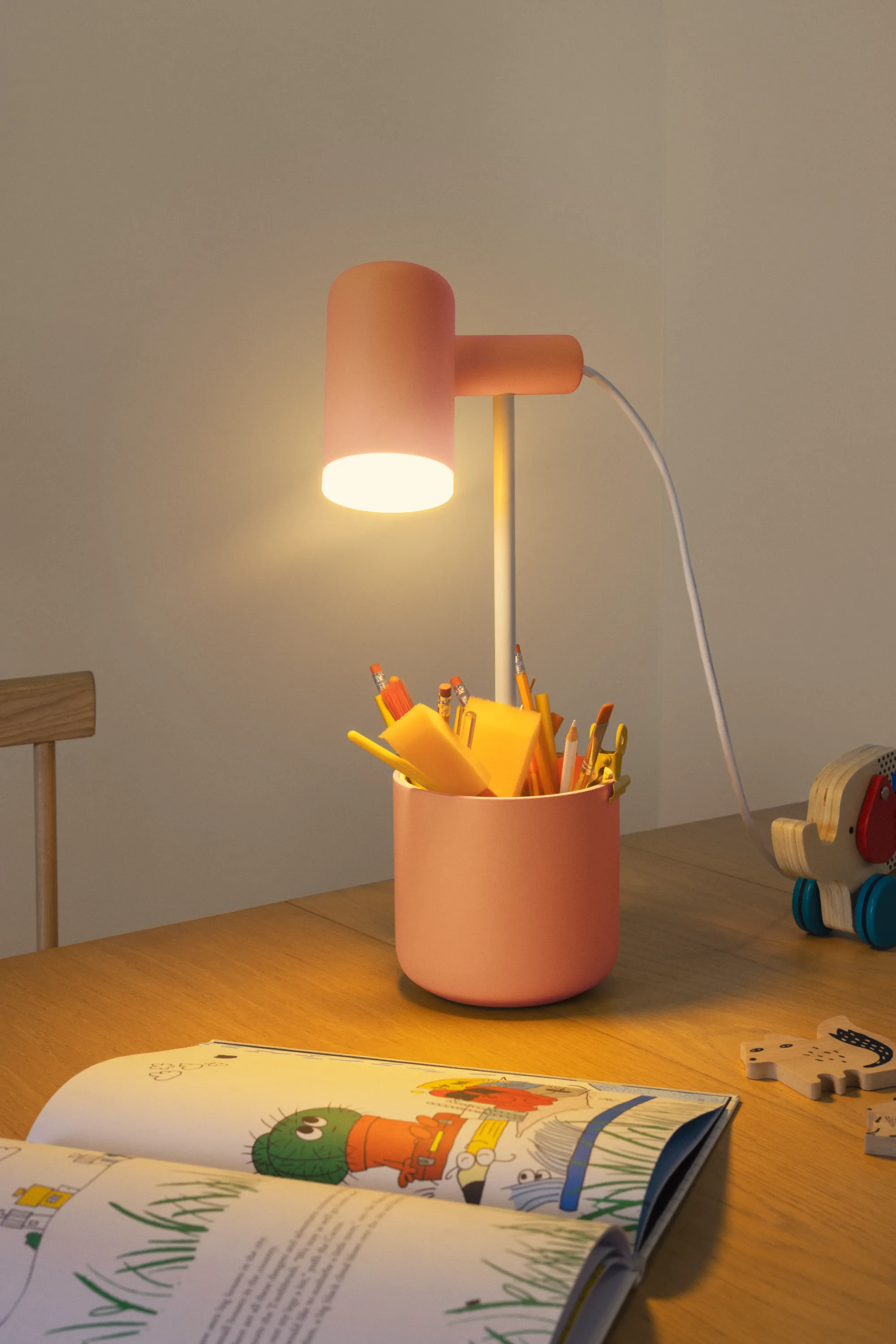What is the best lighting for office productivity?

If you feel your workplace productivity has slumped lately, it could be a result of a poor lighting setup. Whether you work in a home office or on a laptop in your bed, an insufficient lighting setup can hurt your performance and lower your mood. So, what is the best lighting for home office productivity? We have the answer in this guide on lighting and productivity in the office.
Natural light to improve mood

Natural light has a significant effect on our mood, alertness, and productivity.
Research from Cornell University demonstrated that access to natural light in an office environment reduced incidence of eyestrain by 51%, headaches by 63%, and drowsiness by 56%. What’s more, 43% of the employees surveyed said that a lack of natural light had a negative impact on their mood.
While the level of natural lighting in an office environment may be hit or miss, a rise in remote and work-from-home work means we have more control than ever over our home office lighting design.
Access to sunlight helps regulate energy levels, keeping our circadian rhythm in sync. A lack of daylight results in the opposite – energy levels dropping, difficulty sleeping, far less motivation to power through the workday.
The good news is that you can organically design your space to let in more natural light. Moving your furniture, such as your desk and chair, near to a window can boost the sunlight you get during the day (even if you’re not outside). You can also utilize this positioning to get more light for your video conferencing setup – just make sure not to shine the sun directly in the background. Soft, diffusing curtain materials such as sheer can lessen the impact of direct sunlight and keep your space feeling comfortable and serene!
If you need more ideas for creating a comfortable home office space, make sure to check out our guide to home office lighting.
Task lighting to reduce eye strain

Working in the dark while staring at a bright computer monitor can reduce our productivity at best, and damage our eyesight at worst.
Reducing the eyestrain caused by low lighting conditions can keep you working longer and happier. Even thirty minutes of computer work in the dark can be physically drying to your eyes, causing pain and inhibiting concentration. Luckily, there are plenty of lighting solutions that can minimize the experience of eye strain.
Task lighting is one of the best ways to brighten your workspace. At Gantri, we have some amazing designer lighting options that combine eco-friendly design and high-quality materials to create a stunning lighting solution for any workstation.
Some of our latest favorites include the Hula Table Light designed by Felix Pöttinger in Munich, Germany. Available in a range of colors, including a gorgeous blossom pink, this table light is designed to create a feeling of a higher ceiling in small spaces. We love it because of its eco-friendly plant polymer materials, this signature blend in all Gantri products makes their lights not only sustainable but equally as stylish.
Another great item is the Kobble Floor Light designed by Karim Rashid in New York. You can grab it in a variety of colors, including a matching blossom pink with the Hula Table Light. This light packs a slim profile and elegant design to fit into almost any space while providing high-quality diffused lighting day and night. Utilizing Gantri’s museum-quality LED light technology, the Kobble is up to the task of brightening any office or living space.
You can find these products and even more at Gantri.
Ambient lighting for a calming atmosphere

Workplace design is rarely a one-size-fits-all challenge, which is why you might want to invest in variable lighting solutions. Adjustable lights are a great way to alter the ambient light of a workplace, with dimmer lights for a calmer feel, or a brighter light for focus. You’ll be able to make your workplace a pleasant experience no matter the conditions. Every Gantri light, including the ones we listed above, includes dimmer controls to put you in full control of the lighting levels in your space.
You could also check out soft diffusions for natural lighting, such as a set of sheer curtains, to enhance the feeling of sunlight and reduce the glare of bright days. Other decorative lighting additions, such as string lighting, LED strips, and under-cabinet lighting, can be added to your workspace to create a haven of light regardless of the hours you’re working.
Tips for designing your workspace lighting

While the earlier sections answer the question of what is the best lighting for office productivity, there are some other considerations worth making too. So, in this next section, we’ll offer some top tips for designing your workspace lighting – from the scientific to the subjective! We’ll introduce color temperature, different lighting types, and the best lighting-positioned setups for various workplace uses.
Understanding color temperature
Color temperature is a numerical representation of the spectrum of color output by a light source. “Temperature” refers to the range of increasing degrees in Kelvin (K) which goes from warm-toned to cool-toned light. The warmer the light, the lower the temperature.
When it comes to light bulbs, the color temperature spectrum ranges from 1000K to 10000K. 1000K represents the warmest end of the spectrum, with various classics such as candlelight or a sunset. At the other end of the spectrum, 10000K contains the coolest values of light, where blue and overcast skies and computer monitors exist. It’s important to note that the spectrum of color temperature doesn’t correlate with how bright the light source is, simply the range of colors it produces.
Believe it or not, but the color temperature of a space can have a tangible effect on our mood and energy. Think about how you feel in the warm orange glow of a fire, and compare it to the feeling brought by the blues and whites of a sunny day. Commercial light bulbs utilize color temperature to produce a specific feeling. Warmer bulbs are marketed for relaxation and serenity, while cooler bulbs are advertised for the energy and productivity they bring into a space.
Lower-quality light bulbs can hinder their intended usage if they’re not properly color-calibrated, or even worse be damaging to the eyes. Some less-than-reputable companies have even been found to have mislabeled their bulbs to harmful results. That’s why it’s important to always purchase from reputable companies who understand and care about the science and ecological impact of their lighting solutions. If you’re looking for the best of the best, you’ll be happy to check out Gantri for its extended catalog of high-quality, sustainable lighting products.
Positioning for optimal lighting
The position of your lights matters just as much as the products chosen. Diffusion and reflection are some key factors to consider in making the most of a light source in a small space such as a home office. This is especially true if you’re frequently video-conferencing or doing computer work, as direct light sources on your camera lens or monitor screen can lead to annoying distractions such as glare.
Video conferencing setups can benefit from a two-point lighting setup. To accomplish this, you’ll simply need to set up one light as a key light and another light source to be your fill light to eliminate any shadows on your face. With proper setup, you can create an amazing image for your video conference no matter the natural lighting conditions. If you’d like to learn more, check out our guide on video conferencing lighting techniques!
Hopefully, you’ve learned some unique and useful techniques to boost your workspace lighting. We hope you’ll feel more productive and comfortable in whatever space you’re designing. If you’d like to keep the ball rolling, Gantri has created a range of guides to setting up the perfect home office lighting design for any home layout. Ready to start lighting your space for productivity? You can shop the collections here.

